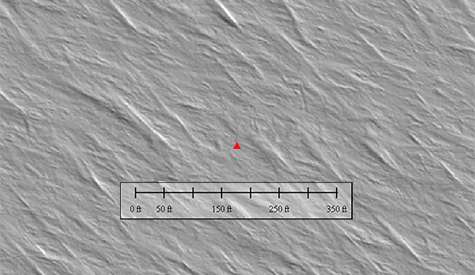Super-TIGER lying low for the Southern Hemisphere winter

(Phys.org)—Late Friday, Feb. 2, an overcast day in St. Louis, the twitter feed for the Super-TIGER cosmic ray experiment burst into life, as the Super-TIGER team received word that NASA's Columbia Scientific Balloon Facility, which provides operations support for scientific ballooning in Antarctica, had decided to terminate the flight of the balloon carrying their detector aloft in the polar vortex.
You can read a "storified" version of the dramatic stream of tweets during the descent here.
"The flight was terminated because we were nearing the end of the polar summer and the balloon was flying toward the mountains," said W. Robert Binns, PhD, principal investigator of the Super-TIGER experiment and research professor of physics at Washington University in St. Louis. "The fear was that it would get hung up in a region where airplanes could not land and so would be unrecoverable. So the decision was to bring it down in what appeared to be a relatively flat region, even though it was far away from McMurdo Station."
"We have the coordinates," said Martin Israel, PhD, co-investigator of Super-TIGER and professor of physics. "It came down at 82.25 degrees south latitude, 81.9 degrees west longitude, 3494 feet altitude. As far as we can tell it is not a mountainous location, but we do not have any specific knowledge of the immediate area. It is about 1000 nautical miles from McMurdo and a few hundred miles from any significant field location. We'll have to wait until next November or December to see if it was damaged and to recover it."
The flight was a spectacular one that broke previous records for heavy-lift scientific balloons. Carried by an enormous balloon, the two-ton Super-TIGER stayed aloft for 55 days, 1 hour, and 34 minutes (counting from the moment of launch to the moment of impact at the end of the flight). The previous record for heavy-lift scientific balloon flights had been set in 2009 by a test flight of NASA's Super Pressure Balloon, which was aloft for 54 days, 1 hour, and 29 minutes.
Because the Super-TIGER detector was aloft so long, it recorded more than 50 million hits by cosmic rays, atomic nuclei whose electrons have been stripped away by their high-speed passage through the galaxy. "However, the objective of the experiment is to measure the nuclei of elements heavier than zinc, and we don't know yet how many of those we detected," said Binns.
The scientists already have some of the data on the heavier element hits, which was siphoned off, telemetered to a communications satellite, which beamed it to the Columbia Scientific Balloon Facility (CSBR) in Palestine, Tex. The CSBR sent it via the internet to Washington University, which passed it along to the California Institute of Technology and Goddard Space Flight Center.
The scientists hope the heavy nuclei data will allow them to confirm that cosmic rays are created in loosely organized groups of hot, massive stars called OB associations and to better understand the method by which they are accelerated.
The Super-TIGER experiment is a collaboration of Washington University in St. Louis, the California Institute of Technology and NASA's Goddard Space Flight Center. The team also includes people from the University of Minnesota and NASA's Jet Propulsion Laboratory.
Provided by Washington University in St. Louis





















